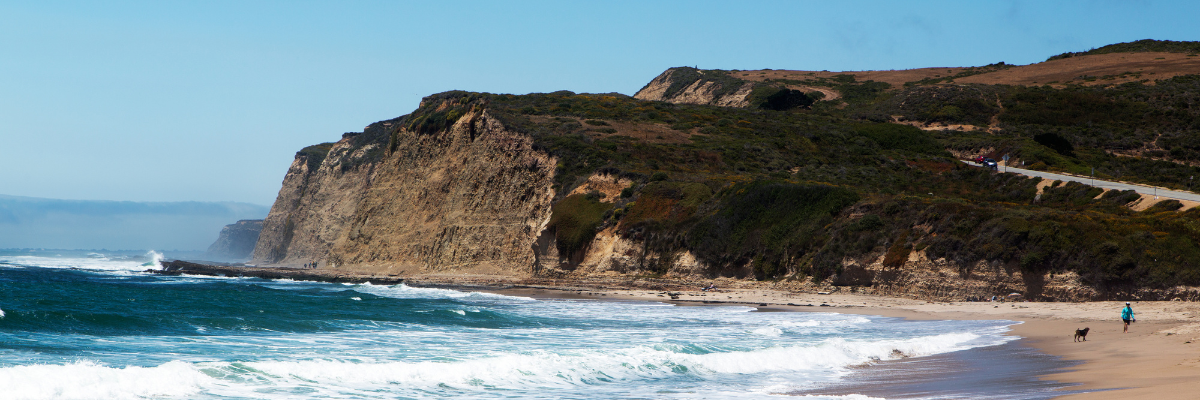The California Current seabird community consists of over 75 species of seabirds, the composition of which changes seasonally. This community includes three major groups: breeding residents, nonbreeding residents that reside in the ecosystem for several months during their nonbreeding season, and migratory species which transit relatively rapidly through the system during spring and fall.
Overview
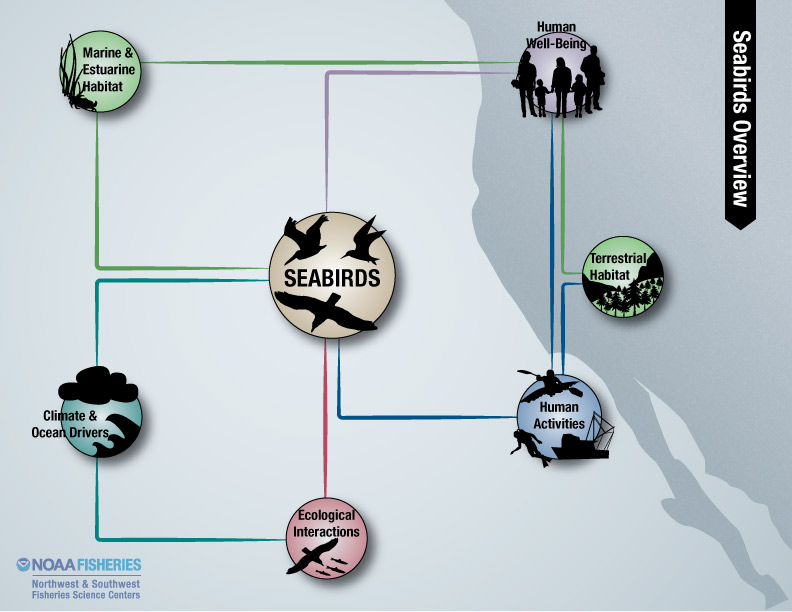
Ecological Interactions
Seabirds rely on forage fish, squid, juvenile salmon, juvenile rockfish, and krill production. They compete with other seabird species and with adult salmon through their reliance on forage fish. Seabirds fall prey to raptors (bald eagle, peregrine falcon, great horned owl) and introduced mammals on their terrestrial breeding colonies.
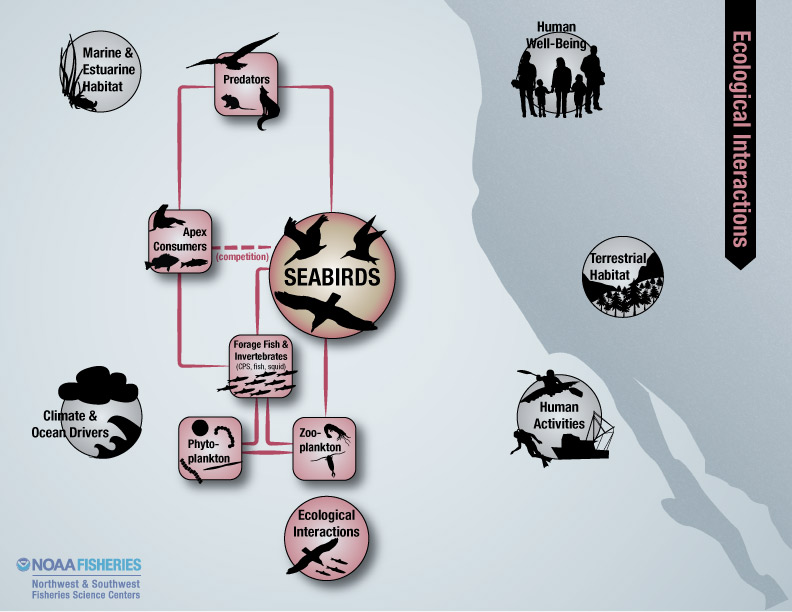
Environmental Drivers
Environmental ocean drivers are reflected by basin-wide indices, such as the Pacific decadal oscillation (PDO) and multivariate El-Nino-Southern oscillation index (MEI), as well as regional indices, such as the coastal upwelling index (UI) and sea surface temperature (SST). All reflect factors that can affect ocean productivity and thus prey availability for seabirds.
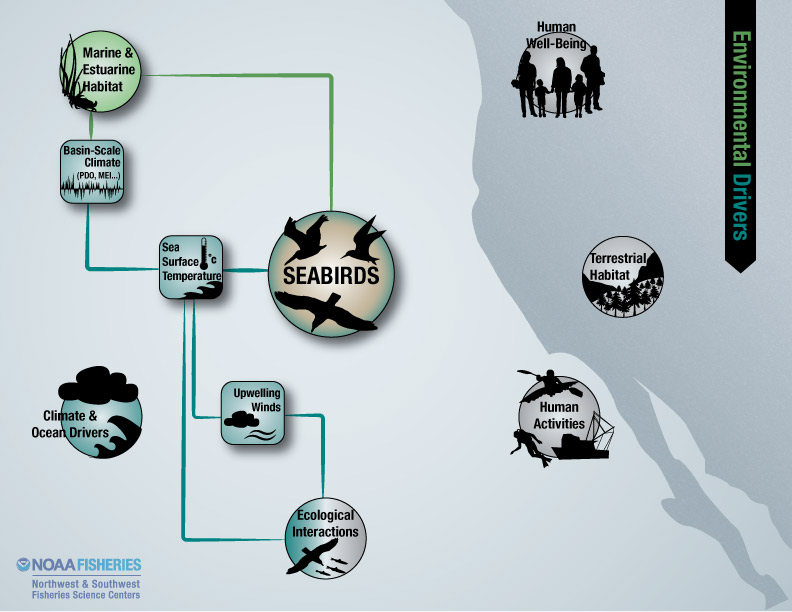
Human Activities
Fisheries bycatch directly impacts some seabird species, and human exploitation of fish prey (fisheries competition), indirectly affects some species. Pollution (oil, plastics, contaminants) affect survival and reproduction of many seabird species. Habitat alteration and human disturbance along coastlines affects seabird breeding, roosting and foraging locations. At-sea and coastal seabird-watching is popular and lucrative examples of human well-being connection. Seabirds are also well-known monitors of the marine environment--acting as "canaries in the coal mine."
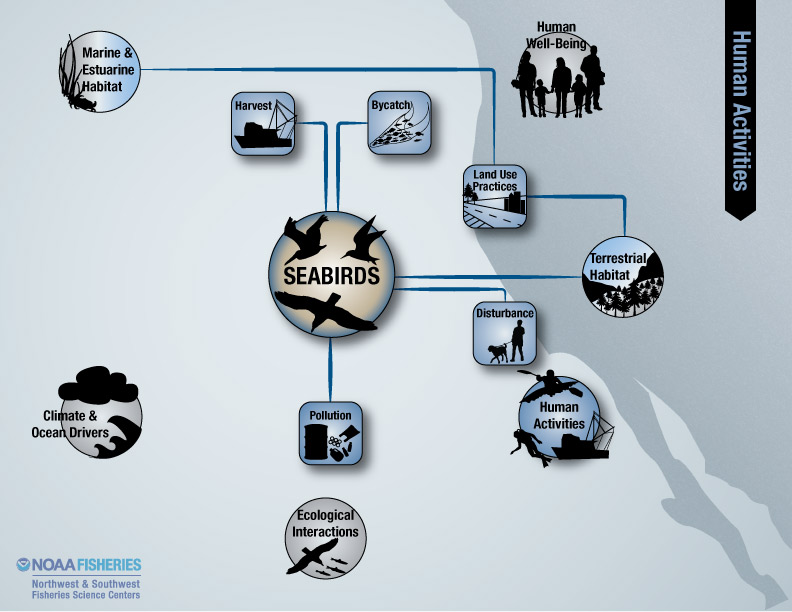
Indicator Status and Trends
Three focal species were selected to represent a range of trophic levels and residence times for seabird species using the California Current ecosystem: piscivorous common murre (breeding resident), piscivorous sooty shearwater (summer visitor), and the planktivorous Cassin's auklet (breeding resident).
Indicators of seasonal mortality and at-sea density for these species can be examined at the link below.
